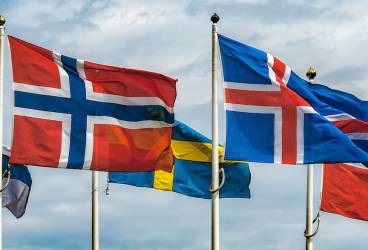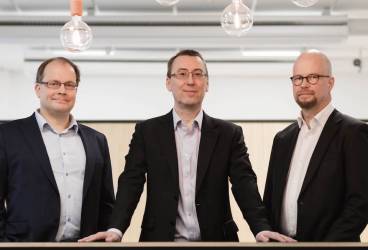Virve makes it possible to get help from the crisis and social services quickly
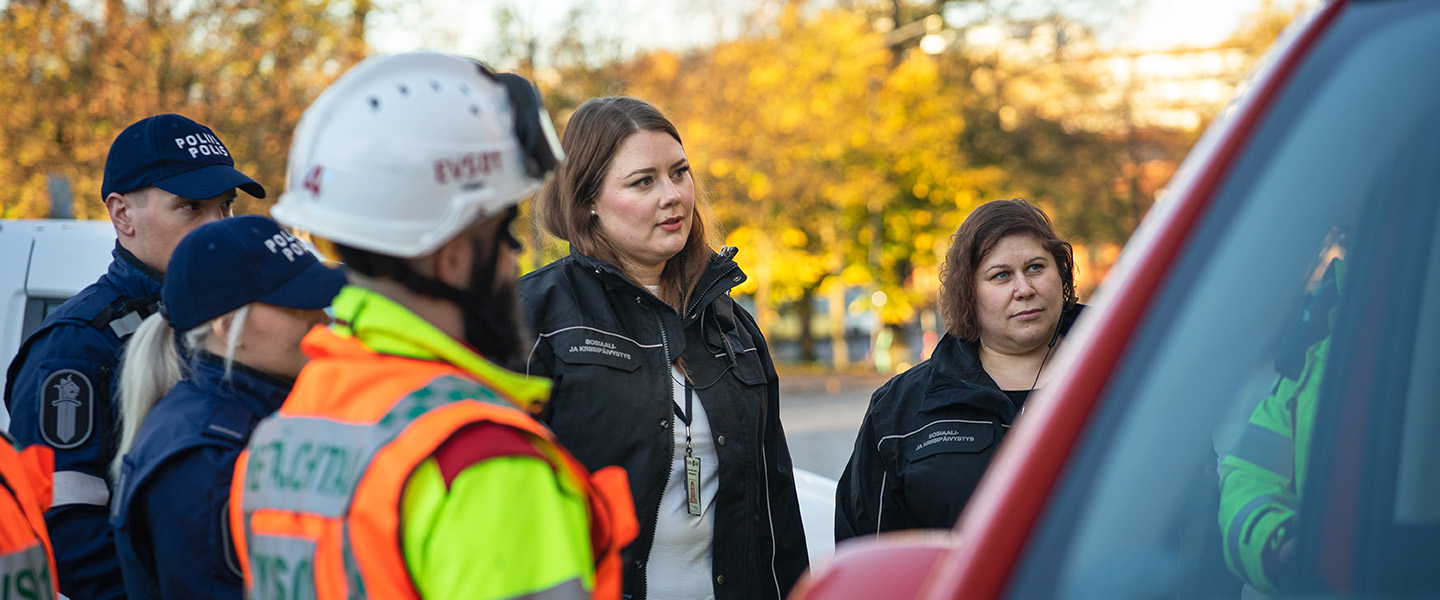
“The best part of the Virve is that it allows rapid cooperation between safety operators. We participate in the mission in real time, and the information obtained through Virve allows us to prepare and plan our work,” says Tiina Pyöli, M.Soc.Sc., of the Southwest Finland emergency social services and crisis services.
In Finland, the emergency social services and crisis services responds to acute needs for support of people of different ages as specified in, for example, the Social Welfare Act and the Child Welfare Act.
“The Emergency Response Centre alerts us on a crisis mission using the 811 code. This code means that something sudden, life-changing has happened; someone has passed away or there has been a close call. Our duties also include traffic accidents and fires, or any kinds of situations where psycho-social support might be needed, either in the form of emergency social services or as acute crisis services,” Hanne Raatikainen, crisis counsellor at the emergency social services and crisis services of Southwest Finland says.
Virve brings security to all
In the case of crisis, people often need other kinds of support than what is offered by, e.g., the rescue services, the police and the emergency medical service. After a fire, housing must be provided and basic needs must be taken care of. In the case of major accidents, a crisis or evacuation centre must be set up, and support is always offered to the loved ones in the case of sudden deaths. Furthermore, children, people with disabilities and the elderly may need urgent help from the social services. The emergency social services and crisis services are on call in these and many other legally required situations.
The emergency social services and crisis services of Southwest Finland works in three shifts 24/7. In each shift, one of the employees acts as the field director, accepting missions from the Emergency Response Centre to Virve, for example, and other unexpected contacts from customers and other authorities.
The field director assigns the missions to the social workers and crisis counsellors on duty. The employees always go out in the field with a partner. The field director asks the Emergency Response Centre to assign a partner for the mission. The partner joins the Virve talk group specified by the incident commander, and the other authorities participating in the mission join the same talk group as well.
“When everyone is in the same talk group, we are able to create a shared situational picture fast and allocate the necessary help,” Hanne Raatikainen says.
“Virve immediately connects us with our field director. The second key usually connects us to our internal talk group, which allows us to ask that those at the office find out the nearest emergency shelters, for example. This brings the information quickly to the partner or group in the field.”
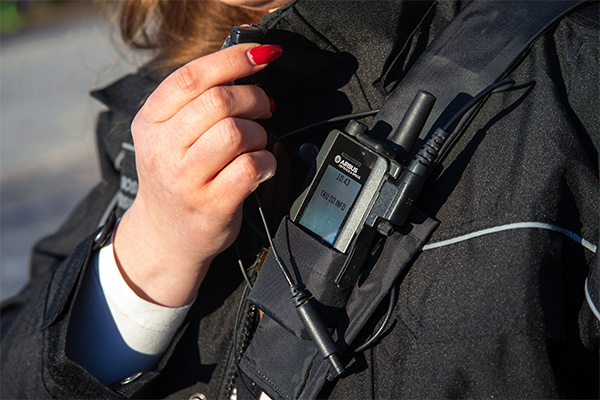
Importance of appropriate equipment
Hanne Raatikainen says that Virve is an essential part of the equipment used for work.
“When you are carrying Virve and wearing in-ear headphones, you immediately feel that you are carrying out an important mission of the authorities.”
Virve brings security in missions related to child welfare, for example.
“I would never go out on a job without Virve. The Virve distress call button allows us to immediately contact the Emergency Response Centre in case something threatening happens during a visit,” Tiina Pyöli says.
“Unlike the other authorities, the positions of our units in the field are not known in real time, which is something for further development,” Hanne Raatikainen says.
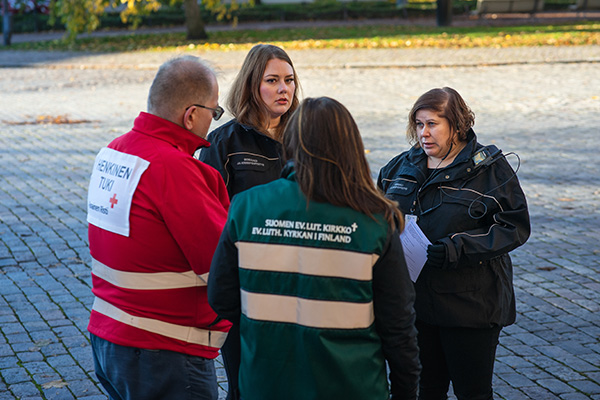
Psychosocial support is important for recovery
The emergency social services and crisis services are in charge of the first-phase psychosocial support in the case of major accidents. Psychosocial support comprises acute crisis work and urgent social work.
If necessary, the emergency social services and crisis services also organise other operators to help, such as staff from the church spiritual care, spiritual care staff of the Finnish Red Cross as well as volunteers. All the operators are using Virve devices
“Psychosocial support is beneficial in many ways during a crisis, but also in the long run. It helps people recover from trauma, supports psychological well-being and helps restore functional capacity,” crisis counsellor Hanne Raatikainen says.
Crisis competence in Southwest Finland has been strengthened since 2021, when crisis counsellors with nursing training were hired for the service. Nurse (Master of Health Care) Hanne Raatikainen is one of them, and she joined the service after working in emergency medical service.
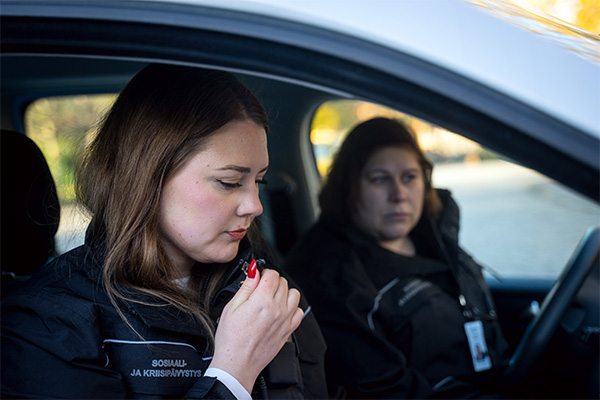
Preparedness and training
The work of the emergency social services and crisis services of Southwest Finland is based on continuous preparation.
“This is a big part of our work. It is very important that we prepare in advance for crises and accidents by means of major and minor exercises,” Tiina Pyöli says.
Virve training is an essential part of the induction of new employees. Using the Virve device also requires regular exercise.
“We discuss the properties of Virve and communications with the Emergency Response Centre and other authorities thoroughly during induction. Using Virve is like learning a new language: you will not learn it if you don’t use it. That is why we organise exercises led by the field director for those working on weekday shifts. We go through Virve’s functionalities so that we will remember them when we really need them,” Tiina Pyöli says.
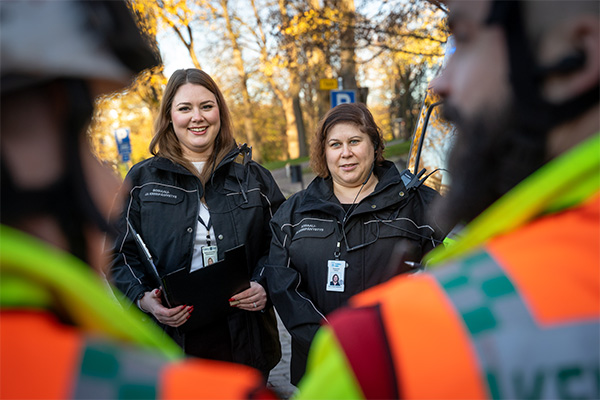
Emergency social services and crisis services cover a wide range of services
The current municipal emergency social services and crisis services will be replaced by emergency social services and crisis services covering a wide area.
At the beginning of 2023, Turku’s emergency social services will change into the emergency social services and crisis services of Southwest Finland, serving the entire province 24/7. The unit is familiar with an extensive area already since it has been responsible for emergency social services outside business hours already before. Southwest Finland has almost half a million inhabitants, and the region comprises 27 municipalities as well as the maritime areas and the archipelago.


